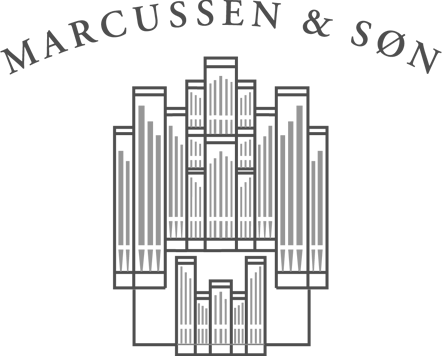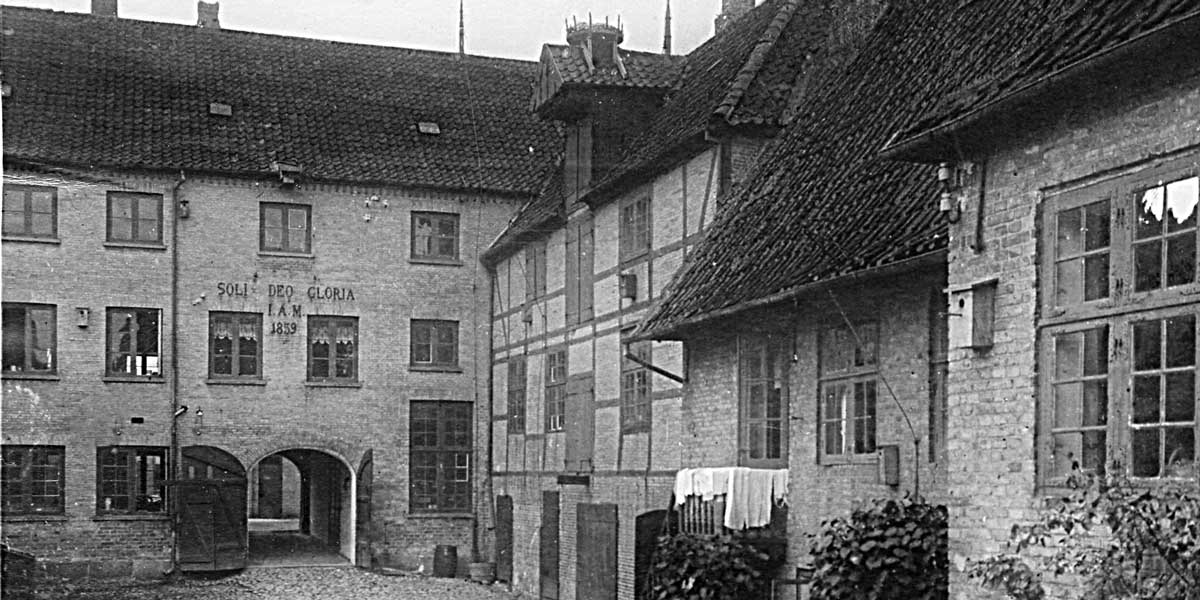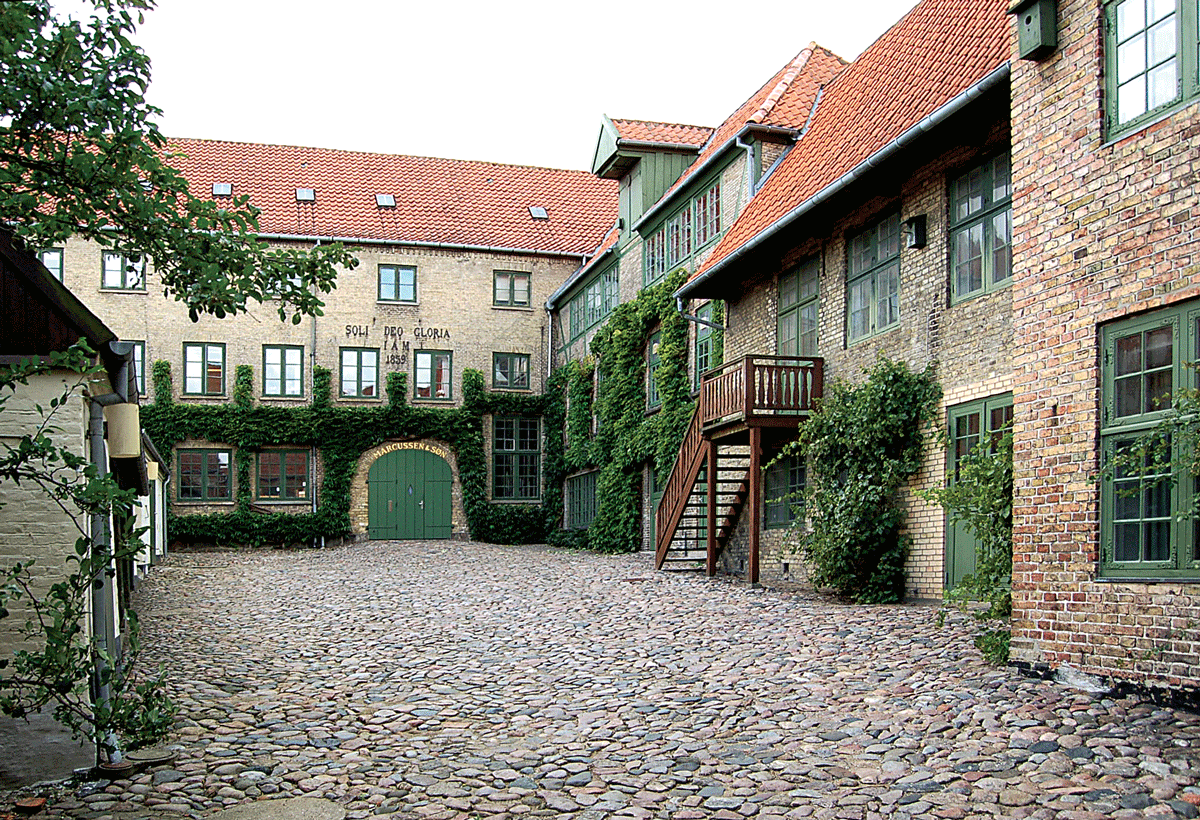Marcussen & Søn
| Founded/Born - Closed/Death | 1806 - ??? |
|---|---|
| Still active? | yes |
| info@marcussen-son.dk | |
| Webpage | https://marcussen-son.dk/?lang=en |
Marcussen & Søn is a Danish organ-building company, also known as Marcussen or formerly Marcussen & Reuter. Since 2002, the family business has been led by Claudia Zachariassen in its seventh generation. It has produced over 1100 instruments, which have been exported to numerous countries, including Germany, the USA, Japan, and South Africa.
The organ-building company Marcussen was founded in 1806 by Jürgen Marcussen (1781–1860) and initially operated out of the first workshop in Vester Sottrup (Sottrup Sogn). In 1811, King Frederick VI granted him a concession as an organ builder. In 1826, Marcussen took his German journeyman and friend Andreas Reuter, the inventor of the stop slit, as a partner in the firm. They operated under the name Marcussen & Reuter. Since 1830, the company has been headquartered in the city of Aabenraa. After the death of Andreas Reuter in 1847 – the same year the cathedral in Lund, southern Sweden, received a Marcussen organ – Marcussen invited his son Jürgen Andreas Marcussen to join the company in 1848, leading to the renaming of the firm to Marcussen & Søn. After the founder's death in 1860, Jürgen Andreas Marcussen became the sole owner of the company. In 1880, his son Hartvig Alexander Marcussen (*1859) became a partner as the intended successor. Before the end of the 19th century, Johannes (Jens) Lassen Zachariassen (1864–1922), a great-grandson of the founder, joined the firm. In the 1880s and 1890s, he represented Marcussen & Søn in Finland. After the death of Hartvig Alexander Marcussen in 1897, Zachariassen initially became a partner in the business and then an employed director after Marcussen's death in 1902.
The first church organs produced by the company were in the Baroque style. From the mid-19th century onwards, they followed the musical taste of the Romantic period. In 1887, Hartvig Alexander Marcussen built a prototype with tubular pneumatic action for the first time. However, by the beginning of the 20th century, more emphasis was placed on technical innovations, such as improved pneumatic action, which replaced mechanical actions, and electrification of the organs. However, this soon proved to be a misdevelopment. Under the leadership of Sybrand Zachariassen (1900–1960), who took over the company in the 1920s, Marcussen & Søn returned to mechanical organs with open voicing. This established Marcussen & Søn as one of the first organ-building firms in Europe to engage with the influences of the organ reform movement. Under Sybrand Jürgen Zachariassen (1931–2012), Marcussen & Søn gained international renown during the 20th century and expanded its activities beyond Europe. In addition to building new instruments, the company also undertakes organ restorations, including those at Roskilde Cathedral.
The company remained in the hands of the Zachariassen family until it was capitalized through conversion into a joint-stock company in 1994. In its seventh generation, Claudia Zachariassen leads the company as CEO alongside Sales Director Daniel S. Christensen, who joined in 2019 and also hails from the organ-building industry. Over the years, the company has created approximately 1125 church and concert organs (including around 400 since 1960) and has carried out countless repair and maintenance works worldwide. The company gained significant attention in the European context with landmark large instruments: in 1968, at the New Cathedral in Linz (70/IV/P), and in 1973, at the Sint-Laurenskerk in Rotterdam (84/IV/P), both featuring mechanical key and stop actions.
The organ-building company Marcussen was founded in 1806 by Jürgen Marcussen (1781–1860) and initially operated out of the first workshop in Vester Sottrup (Sottrup Sogn). In 1811, King Frederick VI granted him a concession as an organ builder. In 1826, Marcussen took his German journeyman and friend Andreas Reuter, the inventor of the stop slit, as a partner in the firm. They operated under the name Marcussen & Reuter. Since 1830, the company has been headquartered in the city of Aabenraa. After the death of Andreas Reuter in 1847 – the same year the cathedral in Lund, southern Sweden, received a Marcussen organ – Marcussen invited his son Jürgen Andreas Marcussen to join the company in 1848, leading to the renaming of the firm to Marcussen & Søn. After the founder's death in 1860, Jürgen Andreas Marcussen became the sole owner of the company. In 1880, his son Hartvig Alexander Marcussen (*1859) became a partner as the intended successor. Before the end of the 19th century, Johannes (Jens) Lassen Zachariassen (1864–1922), a great-grandson of the founder, joined the firm. In the 1880s and 1890s, he represented Marcussen & Søn in Finland. After the death of Hartvig Alexander Marcussen in 1897, Zachariassen initially became a partner in the business and then an employed director after Marcussen's death in 1902.
The first church organs produced by the company were in the Baroque style. From the mid-19th century onwards, they followed the musical taste of the Romantic period. In 1887, Hartvig Alexander Marcussen built a prototype with tubular pneumatic action for the first time. However, by the beginning of the 20th century, more emphasis was placed on technical innovations, such as improved pneumatic action, which replaced mechanical actions, and electrification of the organs. However, this soon proved to be a misdevelopment. Under the leadership of Sybrand Zachariassen (1900–1960), who took over the company in the 1920s, Marcussen & Søn returned to mechanical organs with open voicing. This established Marcussen & Søn as one of the first organ-building firms in Europe to engage with the influences of the organ reform movement. Under Sybrand Jürgen Zachariassen (1931–2012), Marcussen & Søn gained international renown during the 20th century and expanded its activities beyond Europe. In addition to building new instruments, the company also undertakes organ restorations, including those at Roskilde Cathedral.
The company remained in the hands of the Zachariassen family until it was capitalized through conversion into a joint-stock company in 1994. In its seventh generation, Claudia Zachariassen leads the company as CEO alongside Sales Director Daniel S. Christensen, who joined in 2019 and also hails from the organ-building industry. Over the years, the company has created approximately 1125 church and concert organs (including around 400 since 1960) and has carried out countless repair and maintenance works worldwide. The company gained significant attention in the European context with landmark large instruments: in 1968, at the New Cathedral in Linz (70/IV/P), and in 1973, at the Sint-Laurenskerk in Rotterdam (84/IV/P), both featuring mechanical key and stop actions.
No YouTube videos available.
Make this Notebook Trusted to load map: File -> Trust Notebook
https://marcussen-son.dk/contact/?lang=en
https://de.wikipedia.org/wiki/Marcussen_%26_S%C3%B8n
https://de.wikipedia.org/wiki/Marcussen_%26_S%C3%B8n
 Pipe Organ Map
Pipe Organ Map

